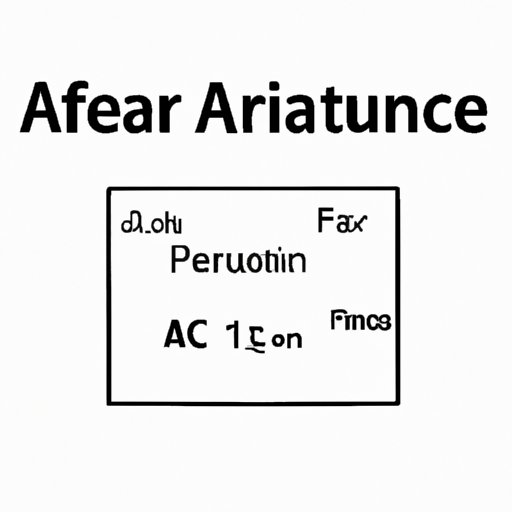Introduction
Knowing how to find the area of a rectangle is an essential mathematical skill that has practical applications in everyday life. From calculating the size of a garden bed to determining the amount of paint needed for a room, understanding how to find the area of a rectangle is useful in many scenarios. This article aims to provide a step-by-step guide for finding the area of a rectangle, highlighting its real-life applications, conversion units, interactive videos, and multiple methods to accommodate different types of learners.
Step-by-Step Guide
Before diving into the step-by-step guide, it’s essential to understand the basic properties of a rectangle. A rectangle is a four-sided polygon with four right angles and opposite sides that are equal in length.
The formula for calculating the area of a rectangle is simple – it is the product of its length and width. That is, area = length x width.
Let’s break down this formula using an example:
Suppose you have a rectangle with a length of 5 cm and a width of 3 cm. To find its area, you would plug in the values into the formula as follows:
Area = 5 cm x 3 cm = 15 cm²
Therefore, the area of the rectangle is 15 square centimeters.
It’s worth noting that the unit for area is always squared. That is, if the length and width of the rectangle are in centimeters, the area will be in square centimeters.
To further illustrate the process, let’s consider another example. Suppose you have a rectangle with a length of 8 meters and a width of 4 meters. To find its area, you would follow the same formula:
Area = 8 m x 4 m = 32 m²
Therefore, the area of this rectangle is 32 square meters.
As these examples demonstrate, the process of finding the area of a rectangle is relatively simple and involves multiplying the length and width.
Real Life Applications
Understanding how to find the area of a rectangle is crucial for many real-life applications. For example, landscapers need to know how to measure the area of a garden bed to determine its size and calculate the amount of compost or soil needed. Builders and architects use this concept to measure the dimensions of rooms and draw up blueprints. Even homeowners find it useful when determining the amount of paint needed for a room or calculating the size of a rug or carpet.
Thus, having a solid understanding of how to find the area of a rectangle is beneficial in many situations, making it a practical mathematical concept to master.
Conversion Units
One challenge in finding the area of a rectangle is when the measurements are in different units. For example, if the length is in inches, and the width is in feet, it’s important to convert the values to the same unit before multiplying them together.
To help with this, you can use a conversion table or follow a simple formula for conversion. Here’s an illustration:
Suppose a rectangle has a length of 6 feet and a width of 12 inches. To find its area, you need to convert the measurement to the same unit. The formula you can use for this is:
Length (inches) = Length (feet) x 12
Using this formula, you can find that the length in inches is:
Length (inches) = 6 feet x 12 = 72 inches
Now that both the length and width are in inches, you can multiply them to find the area:
Area = 72 in x 12 in = 864 in²
Therefore, the area of the rectangle is 864 square inches.
It’s helpful to have a conversion table handy when working with different units. Here’s one to reference:

Interactive Videos
While understanding the formula is essential, some learners may find it difficult to visualize how to find the area of a rectangle. Interactive videos or animations can be helpful in this regard. They demonstrate visually how to calculate the area of a rectangle and can be more engaging and memorable for some learners.
There are many interactive videos available online that can help learners understand this concept. For example, Khan Academy offers videos that break down the formula and illustrate how to use it with different examples.
Multiple Methods
While the formula for calculating the area of a rectangle is straightforward, there are other methods you can use to arrive at the same answer. For example, you can use the diagonal length of a rectangle to find its area. This method is helpful in situations where the diagonal length is known, but the length and width are not.
The formula for finding the area of a rectangle using its diagonal length is:
Area = (1/2) x diagonal length x (diagonal length / 2)
While this formula may seem a bit more complicated, it’s a good alternative for accommodating different learning styles. By exploring different methods of finding the area of a rectangle, learners can find the method that works best for them.
Conclusion
In conclusion, understanding how to find the area of a rectangle is a useful skill to have in everyday life. The step-by-step guide, real-life applications, conversion units, interactive videos, and multiple methods presented in this article can help learners improve their understanding of this mathematical concept. Further practice and exploration of different methods can strengthen one’s grasp on finding the area of a rectangle while also increasing their proficiency in solving similar mathematical problems.
Overall, the practicality and importance of learning how to find the area of a rectangle are undeniable, and it’s a skill worth investing in.
